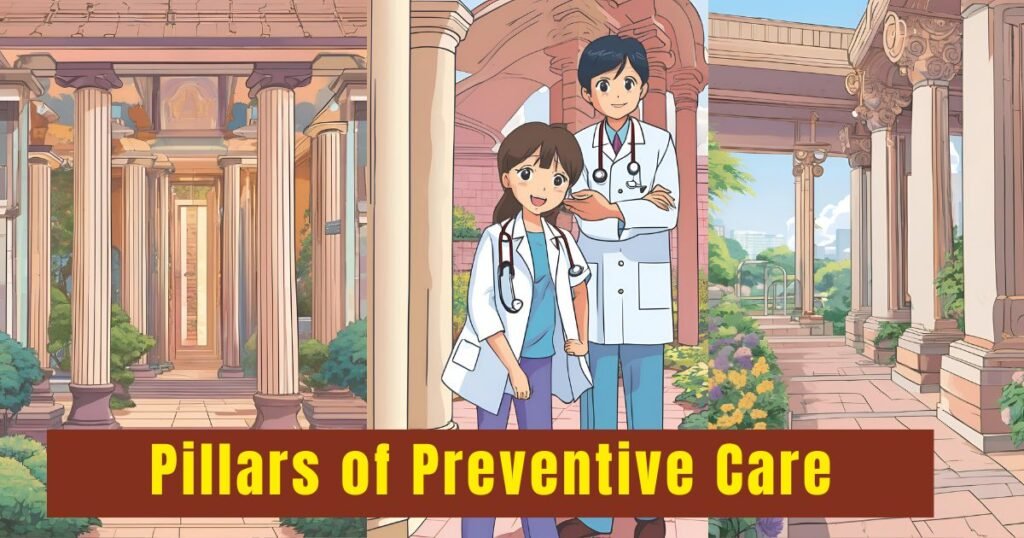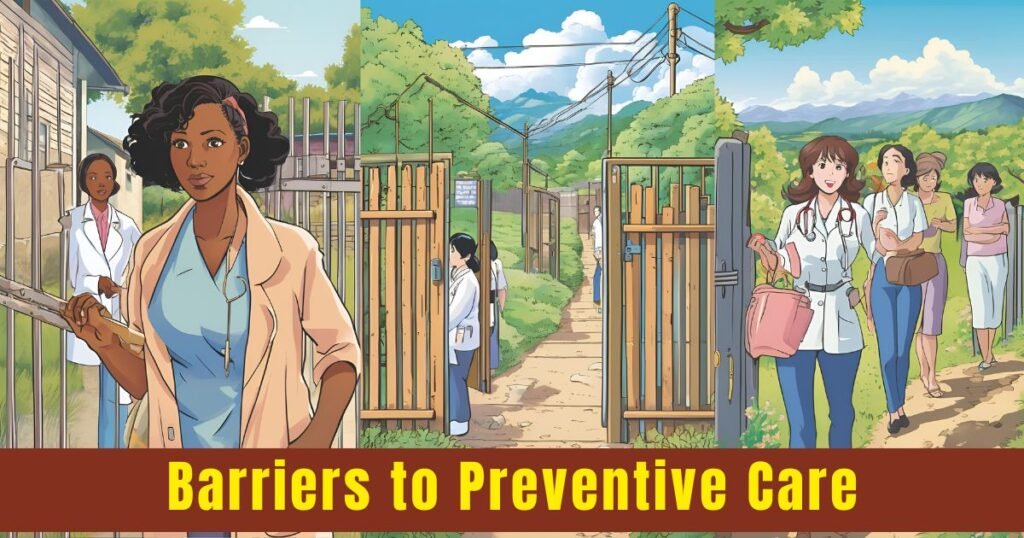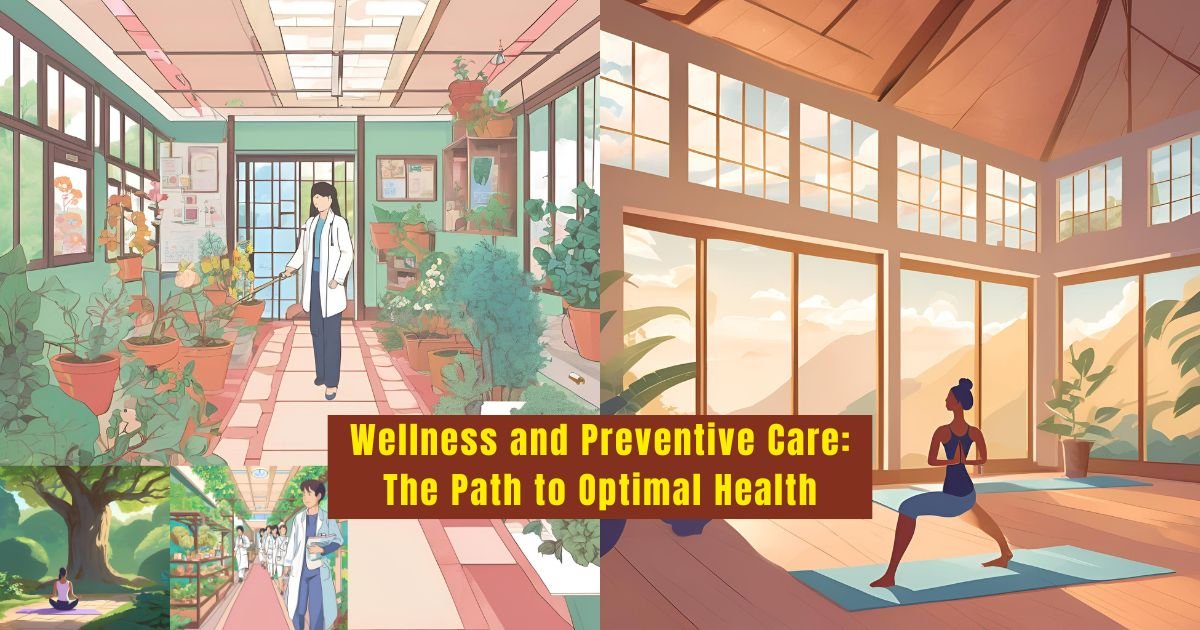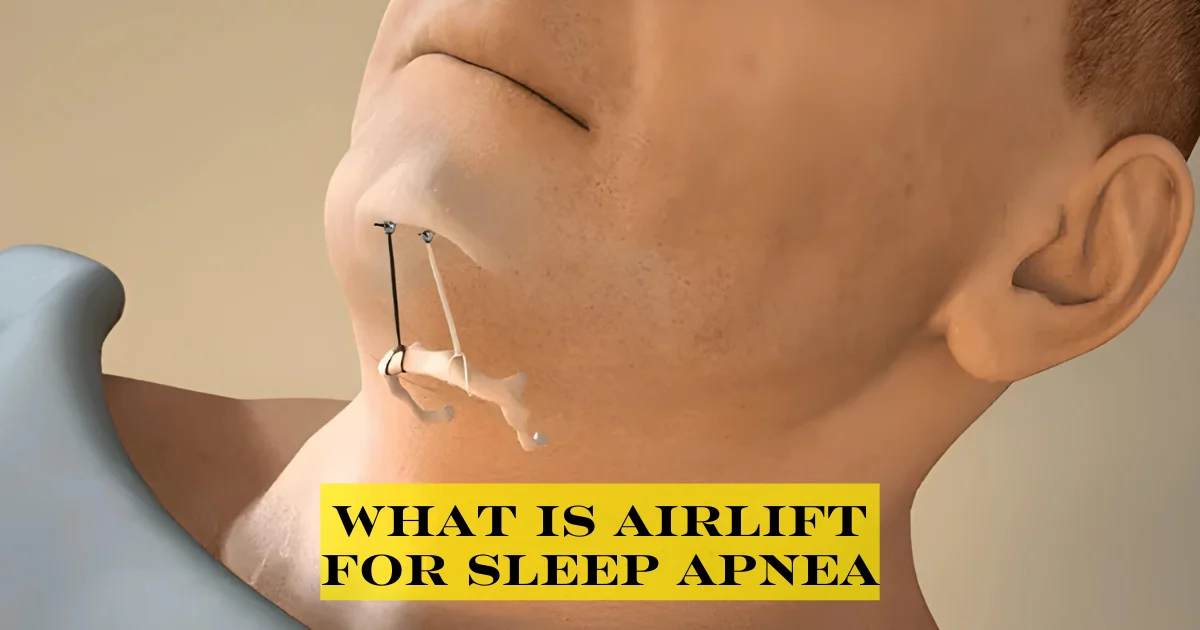Introduction
Taking steps to improve wellness and engage in preventive care is one of the most important things we can do to achieve optimal health. Wellness refers to overall well-being across many aspects of life including physical, mental, emotional, spiritual, social, environmental, occupational, intellectual, and financial health. Preventive care involves measures taken to maintain health and prevent disease, rather than treating illnesses and conditions after they develop.
By making wellness and prevention priorities in our daily lives, we can add years to our lifespan, improve quality of life, reduce healthcare costs, and avoid many common diseases. This article will provide an in-depth look at techniques for enhancing wellness and utilizing preventive care. In this article we cover the topic “wellness and preventive care”.
The Basics of Wellness and Preventive Care

Physical Wellness: Staying active, eating nutritious foods, getting adequate sleep, managing stress, and avoiding harmful substances like tobacco. Regular exercise boosts energy, immunity, cardiovascular fitness, strength, and flexibility. A balanced diet provides proper nutrients and fights disease. Adequate sleep improves concentration, productivity, and emotional health. Stress management enhances coping skills and resilience. Avoiding tobacco prevents lung cancer, emphysema, and heart disease.
Emotional Wellness: Developing self-esteem and self-acceptance, coping effectively with stress, and identifying and expressing feelings productively. Emotional intelligence allows us to understand, communicate, and manage our emotions in positive ways. This strengthens relationships and equips us to handle life’s ups and downs.
Mental Wellness: Engaging in stimulating mental activities, continuing to learn and grow intellectually throughout life. An active, engaged mind lowers risks for dementia and Alzheimer’s. Life-long learning also enhances creativity, memory, decision-making, and problem-solving abilities.
Spiritual Wellness: Finding purpose and meaning, developing inner peace, upholding personal values. Spirituality helps provide a sense of deeper purpose and meaning in life. Practices like meditation cultivate gratitude, compassion, and inner calm. Strong values guide decision-making and foster integrity.
Social Wellness: Developing a support network and strong relationships, contributing to the community. Humans are social creatures with a fundamental need to belong. Close relationships provide love, meaning, and support during hard times. Contributing to the community gives a sense of purpose.
Environmental Wellness: Recognizing how our surroundings and living spaces impact health and taking steps to minimize hazards. This includes avoiding toxins, chemicals, mold, air pollution, lead, asbestos, and other hazards in our homes and atmosphere. Choosing natural cleaning and personal care products enhances indoor environmental quality.
Occupational Wellness: Cultivating personal satisfaction, enrichment, and work/life balance in one’s career. A fulfilling career aligns with our values and utilizes our gifts and passions. Work/life balance prevents burnout.
Financial Wellness: Managing finances responsibly, planning and saving for the future. Responsible spending, saving, and planning help maintain financial stability and prevent problems like crippling debt. This greatly reduces stress and enhances security.
Read More: Wellness Health Promotion and Disease Prevention
Benefits of wellness and preventive care

Increased Longevity: Focusing on prevention and wellness has been shown to add years to life expectancy. Lifestyle changes significantly decrease risks for leading causes of death like heart disease, cancer, diabetes, stroke, and lung disease.
Improved Quality of Life: People who actively engage in wellness activities report having more energy, better physical abilities, low stress, positive moods, and high life satisfaction. Wellness boosts overall vitality and daily functioning.
Lower Healthcare Costs: Chronic diseases that stem from a lack of preventive care account for over 75% of healthcare costs. Increased utilization of preventive services could save billions in treatment. A focus on wellness avoids many future expenses.
Disease Prevention: Most major diseases like diabetes, heart disease, and cancer are largely preventable through lifestyle factors. Wellness helps prevent these illnesses from developing in the first place.
Increased Productivity: Employees with wellness program access are more productive with less absenteeism. Wellness initiatives in the workplace result in healthier, more engaged employees.
Better Health Outcomes: Preventive care results in early detection and treatment of health problems, leading to much better prognoses. Wellness and screening find issues in early, more treatable stages.
Health Equity: Disparities in access to healthcare, health literacy, and high-risk living conditions contribute to poorer outcomes among disadvantaged groups. Wellness initiatives help ensure health equity.
Pillars of Preventive Care

Preventive care aims to protect health by identifying issues early on and managing risk factors before they progress. The key pillars of preventive care include:
Routine Health Exams & Screenings: Also called annual physicals or wellness visits, these exams assess overall health and provide recommendations for age/gender-appropriate screening tests. Screenings like mammograms, colonoscopies, Pap tests, STD tests, and regular blood work help detect issues in the earliest stages.
Immunizations: Vaccines train the immune system to fight dangerous infectious diseases. Staying up to date on immunizations prevents illness, disability, and death from diseases like flu, pneumonia, shingles, HPV, hepatitis, tetanus, and meningitis. Vaccines are one of public health’s greatest success stories.
Chronic Disease Management: For those with conditions like diabetes, heart disease, COPD, and depression, ongoing care aims to control the illness and prevent complications. This includes medication compliance, regular provider visits, lab testing, and lifestyle management. Preventive care is especially vital for those with chronic conditions.
Health Counseling: Doctors guide important lifestyle choices that impact health like nutrition, exercise, sleep, stress, alcohol/tobacco use, injury prevention, and reproductive health. Counseling helps individuals make informed choices that reduce risk.
Dental Care: Regular dental cleanings, exams, and x-rays allow early treatment of cavities, gum disease, and other oral issues. Preventive dental care may also screen for medical conditions like diabetes.
Components of a Healthy Lifestyle

Certain lifestyle factors have an enormous impact on wellness and risk for disease. Some key components of a healthy lifestyle include:
Nutritious Diet: Eating lean proteins, whole grains, fruits, vegetables, healthy fats, and dairy provides balanced nutrition. Less use of sweets, salt, unhealthy fats, and processed foods can make you healthy. A Mediterranean-style diet is associated with longevity and reduced heart disease.
Adequate Exercise: 150 minutes per week of moderate activity like brisk walking plus muscle-strengthening exercise 2-3 times per week. Moving daily helps control weight, lower disease risk, and provide energy.
Restful Sleep: Adults need 7-9 hours of sleep per night. Consistent bedtimes and limiting electronics before bed improve sleep quality. Poor sleep increases the risk of medical problems.
Stress Management: Chronic stress contributes to high blood pressure, heart disease, obesity, depression, and anxiety. Relaxation practices like yoga, deep breathing, and massage help manage stress.
No Tobacco: Smoking is the leading preventable cause of death, increasing risks for lung cancer, heart disease, stroke, and respiratory illness. Quitting smoking is one of the best health decisions you can make.
Limited Alcohol: Heavy drinking causes liver disease, high blood pressure, stroke, mental decline, and several cancers. Moderation is key – no more than 1 drink daily for women and 2 for men.
Safe Sex / Protection against STIs: Consistent condom use prevents sexually transmitted infections like HIV/AIDS, herpes, HPV, gonorrhea, and chlamydia. Get tested regularly if sexually active.
Skin Protection: Use sunscreen and avoid tanning to prevent skin cancer. Examine skin monthly and get annual skin checks from a dermatologist.
Preventive Care across the Lifespan

Recommended preventive care varies across different life stages from childhood to older adulthood. Key services by age include:
Infancy & Early Childhood
- Regular well-child visits and growth/development monitoring
- Newborn health screenings for PKU, hypothyroidism, sickle cell anemia
- Immunizations – DTaP, MMR, polio, chickenpox, hepatitis A & B, flu
- Dental care beginning first tooth eruption
- Vision and hearing assessments around ages 4-5
Middle Childhood
- Annual well-child exams
- Second MMR vaccine around age 4
- Recommended vaccinations like HPV, meningococcal
- Dental cleanings every 6 months
- Vision screening
Adolescence
- Annual well visits
- HPV vaccine series
- Tdap booster
- Counseling on healthy lifestyle, sexual health, substance abuse
- Mental health screening
Young Adulthood
- Blood pressure, cholesterol, STD screening
- Pap smears and pelvic exams for women every 3 years
- Clinical breast exam every 3 years starting at 20
- Skin cancer screening annually
- Flu shot every year
Middle Adulthood
- Annual physical exam
- STI screening for those sexually active
- Mammogram every 1-2 years starting at 40
- Colon cancer screening beginning at 45
- Diabetes screening at 40 if overweight
- Bone density screening for women at 65
Older Adulthood
- Annual wellness visit
- Recommended immunizations – shingles, pneumonia
- Cancer screening – mammogram, colonoscopy
- Bone density testing
- Cognitive function assessments
- Fall risk assessment
- Depression screening
Barriers to Preventive Care

While preventive care offers many rewards, some barriers keep people from fully utilizing it. These obstacles include:
Lack of access: People without health insurance are less likely to get preventive care due to high out-of-pocket costs. Rural residents may lack providers nearby.
Limited health literacy: Many patients lack understanding of which services they need and why they are beneficial. This affects adherence to screening and immunization guidelines.
Competing priorities: For vulnerable groups like the working poor, the uninsured, and single parents – the urgency of daily survival needs often takes priority over preventive care.
Cultural beliefs: Different cultural groups have varying attitudes toward healthcare. Some may only seek care when ill or use home remedies. Building trust with providers is key.
Embarrassment: Screenings that involve discussion of sexual health, bowel habits, or the need to disrobe may cause feelings of shame that prevent care.
Fear and avoidance: Some avoid tests like mammograms or colonoscopies due to fear of discovering disease. Others distrust the medical system. Emphasizing benefits is important.
Lack of provider recommendation: Many patients rely on a provider’s advice to get needed services. Inconsistent recommendations result in missed screenings and immunizations.
Strategies to Improve Preventive Care Utilization
Public health initiatives to enhance the delivery and utilization of preventive care services include:
Expanding insurance coverage: The Affordable Care Act greatly increased access to preventive services by eliminating copays and deductibles for many screenings, vaccines, and well visits. Continuing to build upon insurance reforms can further reduce barriers.
Community outreach and education: Campaigns at the local level can promote immunizations, cancer screening, well visits, and lifestyle changes. These enhance community knowledge and buy-in. Partnerships with schools and faith groups extend reach.
Patient reminder systems: Reminder calls, texts, emails, or mailed notices let patients know when they are due for good visits, cancer screening, vaccines, or other important care. Health systems increasingly use patient portals and health apps to provide reminders.
Public transportation and mobile clinics: Free or low-cost transportation services and mobile preventive care clinics in rural or underserved areas improve accessibility and convenience of obtaining needed services.
Culturally appropriate messaging: Public health messaging and doctor-patient communications should reflect the language, attitudes, values, and beliefs of diverse population groups to encourage engagement in preventive care.
Health system quality improvement: Processes like electronic health record prompts, clinical decision tools, and physician performance metrics can reduce inconsistent recommendations and improve guideline adherence on immunizations, cancer screening, and other prevention measures.
By leading a lifestyle focused on wellness prevention and utilizing regular preventive care across our lifespans, we can dramatically reduce our risks for disease, disability, and early death. Protecting health through prevention helps ensure we live our lives to the fullest.






